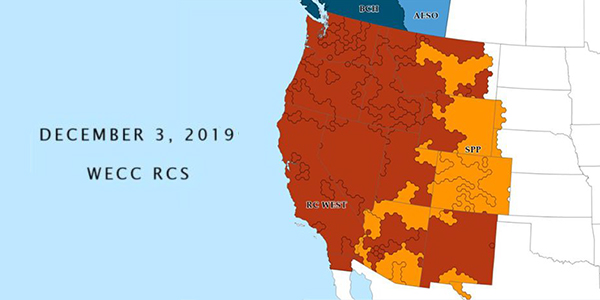By Robert Mullin
SALT LAKE CITY — The Western Interconnection’s transition to multiple reliability coordinators ended on a high note Tuesday when SPP took over the remaining portions of Peak Reliability’s territory in the Mountain States region.
Western Electricity Coordinating Council CEO Melanie Frye took note of the happy conclusion to the 18-month process the next day with a touch of regret, even as others noted that the challenges were not all in the past. “Going into this, there was a lot of concern and a lot of angst as to how this would all turn out, but once again the industry has come together and proven what we can do,” Frye said during a WECC Board of Directors meeting Wednesday. “I’m really proud to acknowledge that — and a little saddened with Peak being dissolved. They’ve really been great for the interconnection.”
Under mounting financial pressure as more of its customers signaled their intentions to defect to CAISO’s lower-cost RC service (now called RC West), Peak announced in July 2018 that it would shut its doors by the end of this year.
The announcement — coming about a month after Frye assumed the helm at WECC — set off alarm bells for a region accustomed to being served by one major RC, initiating a scramble by WECC and NERC to ensure a smooth transfer of RC responsibility to CAISO, SPP and BC Hydro. But by September, WECC officials were assuring their board members that they and other industry participants had the situation in hand. (See No ‘Hiccups’ for West’s RC Transition.)
Frye lauded the “tremendous amount of work” done by the new RCs, Alberta Electric System Operator’s existing RC and the “engaged and focused” industry participants who ensured “all of the tools were developed.”
She also “selfishly” called out the key contribution by WECC senior engineer Tim Reynolds, team lead for each RC’s certification.
“It’s been a tremendous lift this year, [and] Tim has performed admirably. I know [he worked] lots of weekends and nights — and I’ve seen the texts and the emails, so I think we really should be proud of what has been accomplished in the interconnection,” Frye said.
She also pointed to Peak’s own role in the transition: “My hat’s off to Peak Reliability, [CEO] Marie Jordan and her entire team. They performed until the very last moment that their services were required.”
Tightening the Seams
Branden Sudduth, WECC vice president of reliability planning and performance analysis, said he had been reflecting on where the organization was a year ago, “anticipating the amount of work that was going to be needed in 2019 to make this a successful transition.”
“Between the utilities, the RC transition coordination group, WECC, NERC and other entities — the new RCs [and] Peak — it really was a herculean effort that they were able to accomplish this this year. They did run into several bumps along the way, but the industry really kind of [grabbed] the bull by the horns and they overcame,” he said.
Sudduth cautioned that WECC’s work with the RCs wasn’t done, but instead entering a new phase.
“This isn’t it. We can’t just say, ‘Alright, perfect, we’re done. The transition’s complete.’ We need to make sure that these RCs are performing effectively,” he said.
Sudduth outlined WECC’s “next steps,” which include ramping up reliability and security oversight activities — the auditing that will verify the new RCs are following NERC standards. He also emphasized WECC’s role in ensuring that the new RCs reach across newly formed boundaries to work with each other.
“We recognize the importance of ensuring that any seams issues between the RCs are addressed, and this coordination and continued communication between the RCs needs to happen,” he said.
Sudduth noted that while WECC will hold its final RC transition webinar next week, “that doesn’t mean we’re not going to receive regular updates on the new RCs. It just means that that will now continue to happen at [WECC’s] Operating Committee meetings,” held quarterly.
The ‘Fragile’ West
WECC Member Advisory Committee member Fred Heutte, of the Northwest Energy Coalition, added his praise during the board meeting’s public comment period.
“I want to thank and commend WECC for stepping up and doing what really needed to happen to make sure that things did not get sideways, did not fall behind,” Heutte said. “The really strong willingness by all of the new RC coordination organizations to make this work was not going to be enough by itself. There needed to be a cohesive approach and enough pushing to make sure that things got done, and WECC has really succeeded in my view.”
But Heutte expressed reservations about the outcome of fractured RC services in the West, questioning whether the new arrangement will stand the “test of time.”
“I wish everybody the best of luck going forward. As I’ve said before, in the future, we may want to reconsider having multiple RCs in the West. There are some distinctive differences in topology here that make the situation more … fragile, perhaps, than [in] the East, but I know that we’ll pursue this current arrangement as best we can.”






